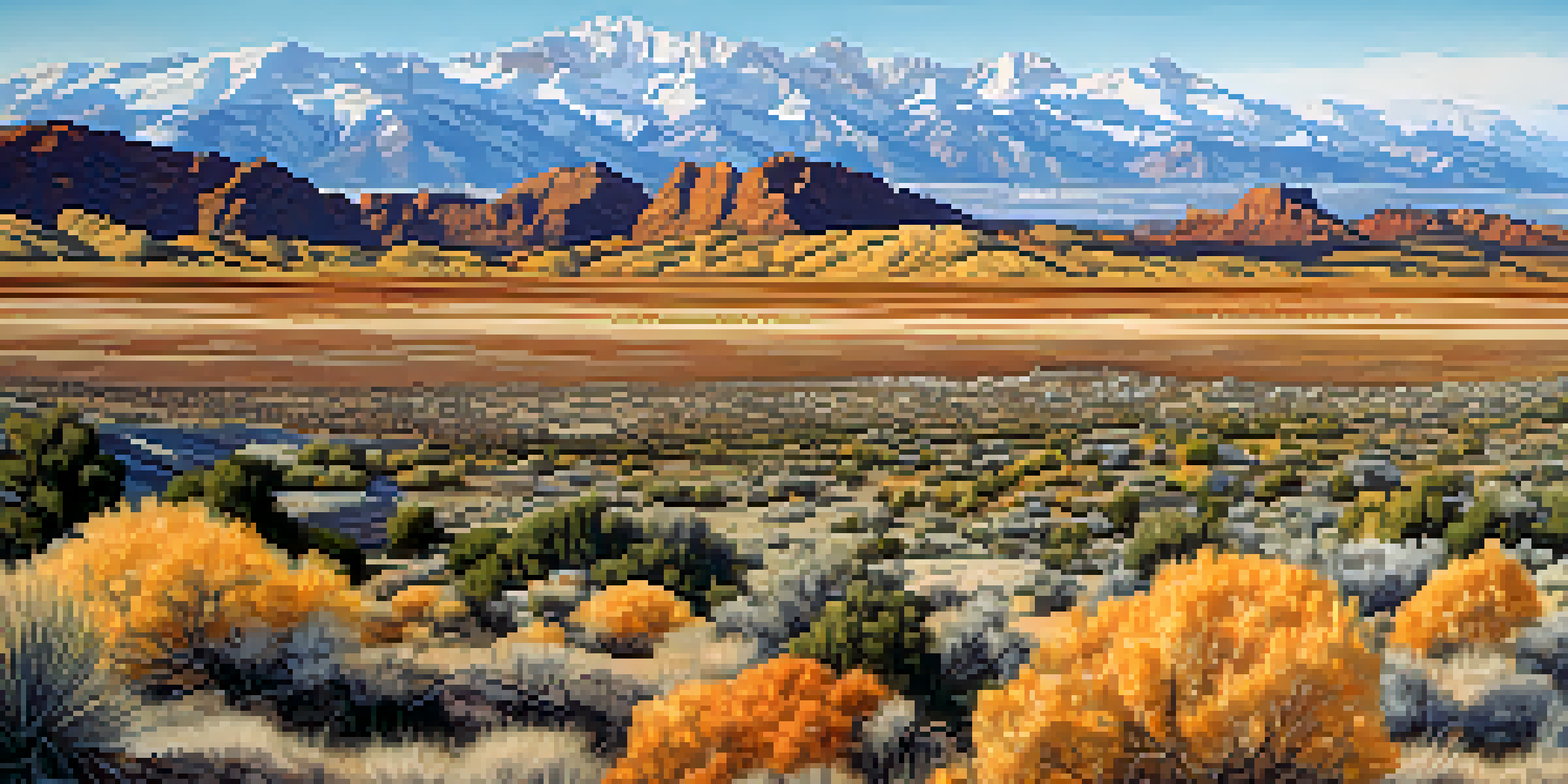Seasonal Weather Extremes: Utah's Challenges and Adaptations

Understanding Utah's Unique Climate Patterns
Utah's climate is a fascinating blend of desert and mountainous influences, leading to distinct seasonal variations. The state experiences everything from scorching summers to frigid winters, which can sometimes feel like extremes within a single week. For instance, temperatures can soar above 100°F in July, while January might bring sub-zero chill to the northern regions. This diversity in weather provides both challenges and unique opportunities for the state’s residents and ecosystems.
The Impact of Drought on Utah's Environment
Drought is one of the most pressing challenges Utah faces, affecting water supply and agriculture. This phenomenon can lead to reduced river flows and diminished snowpack, which are crucial for water storage during the warmer months. Farmers often find themselves adapting by implementing water-saving technologies and switching to drought-resistant crops. The state's natural landscapes also feel the strain, with increased risk of wildfires and habitat loss for native species.
Utah's Climate: A Seasonal Rollercoaster
Utah experiences extreme seasonal variations, from scorching summers to frigid winters, impacting both residents and ecosystems.
Heavy Snowfalls and Their Effects
While drought poses significant issues, Utah also experiences heavy snowfalls, especially in the Wasatch Range. These snow events can lead to excellent skiing conditions but also bring challenges such as road closures and avalanche risks. However, the state's infrastructure is designed to handle winter storms, with snowplows and salt trucks ready to keep roads safe. Additionally, the snowpack is vital for replenishing water supplies, highlighting the delicate balance between winter's benefits and hazards.
Heat Waves: A Growing Concern for Utahns
Heat waves have become increasingly common in Utah, raising concerns about public health and safety. As temperatures climb, particularly in urban areas, residents face risks of heat-related illnesses. To combat this, local governments have started offering cooling centers and public awareness campaigns to protect vulnerable populations. These adaptations are crucial as the state navigates the rising temperatures and strives to safeguard its communities.
Drought and Agriculture Adaptations
Farmers in Utah are adapting to drought conditions by implementing water-saving technologies and switching to drought-resistant crops.
The Role of Wildfires in Utah's Ecosystem
Wildfires, while often destructive, play a complex role in Utah's ecosystem. These fires can rejuvenate landscapes, clearing out dead vegetation and promoting new growth. However, the increasing frequency and intensity of wildfires due to climate change present a formidable challenge for both wildlife and residents. As a response, Utah has invested in fire prevention programs and community education to help mitigate risks and promote safe practices.
Adapting Agriculture to Climate Variability
Utah's agricultural sector is directly influenced by the state's variable climate, compelling farmers to adapt continually. Techniques such as crop rotation, improved irrigation methods, and the use of drought-resistant seeds are becoming more commonplace. Farmers are also increasingly relying on technology, such as weather monitoring systems, to optimize their practices. These adaptations not only help sustain crop yields but also contribute to overall food security in the region.
Community Resilience Initiatives
Local communities are fostering resilience against climate challenges through tree planting programs and water conservation campaigns.
Community Initiatives for Climate Resilience
Communities across Utah are stepping up to address the challenges posed by seasonal weather extremes. Initiatives such as tree planting programs and water conservation campaigns are gaining traction, fostering a sense of collective responsibility. Local organizations are also promoting sustainable practices to enhance resilience against climate impacts. These grassroots efforts not only strengthen community bonds but also contribute to a healthier environment.
Looking Forward: Utah's Future Climate Strategy
As Utah continues to grapple with its seasonal weather extremes, a forward-thinking climate strategy is essential. Policymakers are urged to consider long-term solutions that balance economic growth with environmental sustainability. Collaboration between government agencies, businesses, and residents will be key to developing effective adaptation measures. By embracing innovation and community involvement, Utah can navigate its climate challenges and secure a sustainable future.